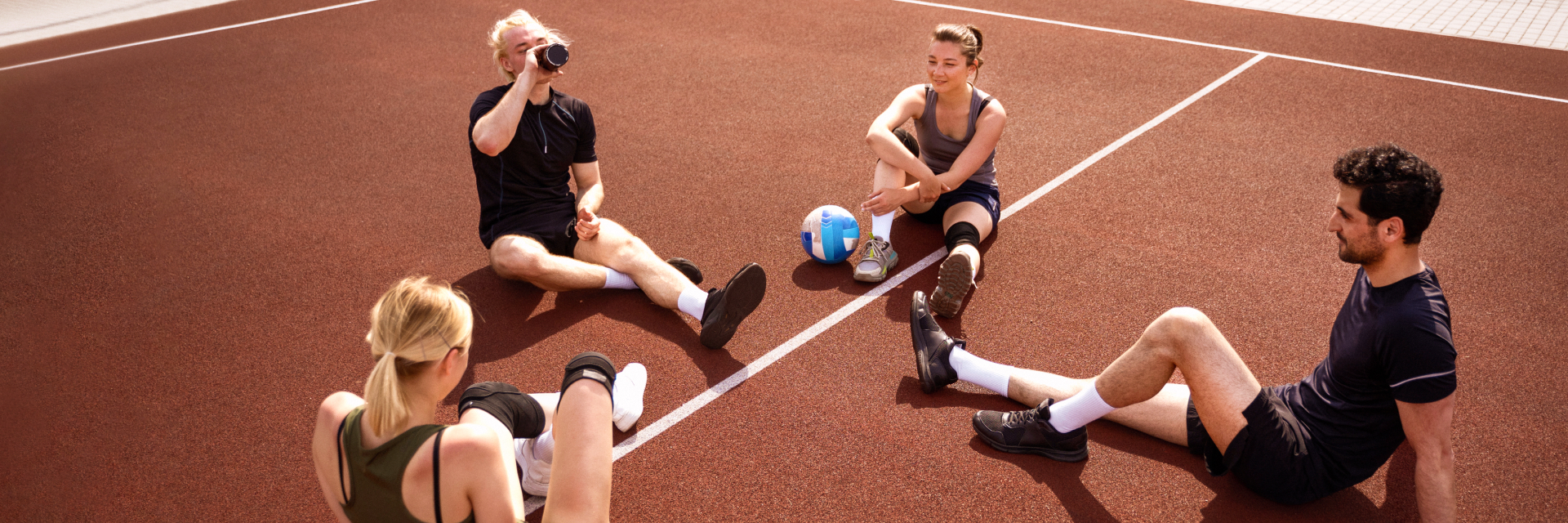Did you know we have 206 bones in our bodies? And babies have even more – we’re born with around 300, and some fuse together as we age. With so many bones in our body, at a certain point, we must ask ourselves – how can I best keep my bones healthy? And what about joints – is there anything that can suggest how to keep healthy joints?
In this post, we’ll cover what you can do to support the health of your musculoskeletal system.
Why is bone health important?
Who wants to be able to dance, play with their grandkids, or go on spontaneous adventures and long walks along the beach when they’re older? If that sounds like you, you should prioritize your bone and joint health today.
When taking care of your whole body, joints and bones can be pushed to the side in favor of other things. But our skeletal system supports us, protects the organs and is responsible for keeping us moving. If you’re looking to stay active as you age, caring for your bones and joints should start when you’re young.
Exercises to Build Bones
Does your daily dose of movement guarantee you healthy bones and joints? It just might!
Our bones have special cells that are able to perceive how much strain our bones undergo, which regulates bone formation. The cells can then send signals that turn on our bone growth machinery. In addition, exercise can support healthy joints and lower pain people may experience. But do all types of exercise do so equally?
In order to keep healthy joints and bones, there are a few particular types of exercise that work best.
Weight-bearing exercises are great for the bones. When you do these exercises, your bones feel a force that makes them turn on the strengthening machinery. These are exercises anyone can do anywhere:
- Waking at a quick or brisk pace
- Going up the stairs or the Stairmaster in your gym
- Jogging or going for a run
- Any sports that involve a racket
- Dancing
The second type of exercise that’s super great for joints and bones is resistance exercise. These types of exercises strengthen the muscles around your joints and bones, which helps support them. In addition, they also exert force on your bones, which sends signals for your bones to strengthen themselves. These exercises can be done at home, outside, or in the gym – get creative! Good examples include:
- Lowering or raising weights
- Using resistance bands
- Using the machines at the gym
- Doing body-weight exercises like push-ups
The key to exercise is to do it consistently during the week. Make sure you’re doing a full-body resistance routine, as the beneficial response from exercise is localized during this type of training.
If you’re looking to start incorporating these exercises into your routine, make sure to consult with a physician before starting. They’ll be able to advise on what to look out for and what can suit you best.
Diet for healthy bones
One of the best ways to support our health is through eating a diet for healthy bones. Certain micronutrients like calcium, vitamin D, and vitamin K can benefit the bones and joints. Protein can also benefit healthy bones.
There’s a specific type of protein that can be considered one of the best healthy joint and bone supplements. That’s collagen. It can improve bone strength and joint function, which supports more effortless movement. That’s because collagen is a major structural part of the bone and cartilage, making up about 60% of the latter!
You can obtain it from foods like chicken and fish meat. To help the body make its own collagen, try increasing your intake of foods that contain protein and vitamin C. Alternatively, try a collagen supplement, like Maxler Beauty Collagen.
Calcium
Calcium is probably best known for its importance for healthy bones. You can get plenty of calcium through the foods you eat, with dairy, leafy greens, and nuts and seeds being excellent sources of this nutrient. Calcium does an essential job in bones – it provides the structure and strength of the bone.
Vitamin D
Vitamin D is one of the best vitamins for healthy joints and bones. It is required to absorb calcium, which is needed to support bone strength. It also affects our cartilage and may support joint health. The best way to get this vitamin is through sun exposure – why not hit two birds with one stone and exercise outside when it’s sunny?
If you’re finding it hard to get enough sunlight, consider adding vitamin-D-fortified foods to your diet or a supplement like Maxler Vitamin D3 5000 IU Drops.
Quit Smoking
Does smoking have anything to do with bone health? In fact, it does! A study that pooled together data from 86 investigations suggests that smokers tend to have lighter bones than those who don’t smoke, and this may affect your risk of fracture. Why is that the case?
It turns out that tobacco smoke affects all sorts of processes in the body. It can affect how the body processes calcium, lowering our body’s ability to absorb it. It can also change which processes are happening in the bone directly, reducing the activities of the cells inside our bone called osteoblasts. These cells build our bones through what’s called ossification, where these cells make the building blocks that support the structure and bone shape.
Limit Alcohol
If you like to indulge in the social consumption of alcohol, you might want to rethink that practice if you’d like to keep your bones healthy. Excessive alcohol intake can affect bone mineral density, which can, in turn, make your bones more fragile. Drinking just a little can put you at a higher risk of weak bones, with those drinking one or two drinks a day having 1.34 times the risk.
Instead of a round of beers or some fancy cocktails, consider drinks that can benefit your bone and joint health, like water, juices high in antioxidants, tea and dairy drinks.
Taking care of bone and joint health today can set you up for an active and pain-free future. By combining a good exercise regimen with essential micronutrients, you can help your bones and joints stay healthy. You’re in charge of the future – make a positive change today!










